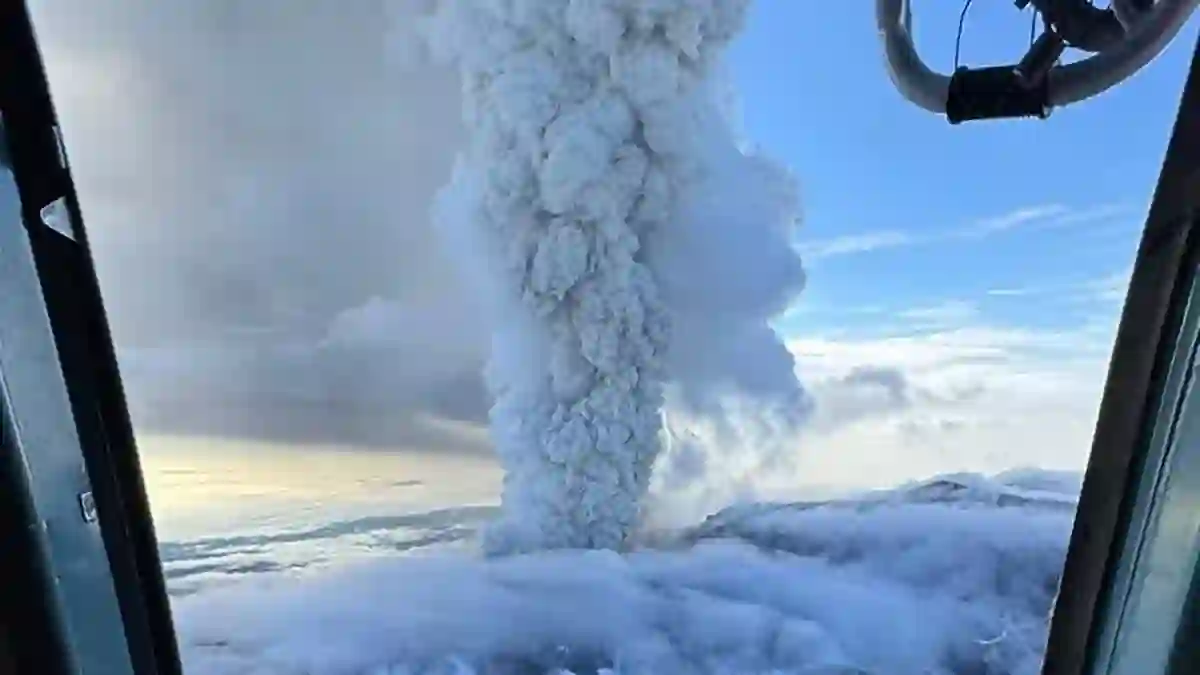After lying dormant for centuries, one of Russia’s sleeping giants has finally roared back to life.
The Krasheninnikov Volcano, tucked away in the volcanic landscape of the Kamchatka Peninsula, erupted for the first time in more than 600 years, sending a massive ash cloud soaring into the sky and triggering alerts across the region.
What makes this even more dramatic? The eruption came just days after a powerful earthquake rocked the same region—fueling concerns about the growing instability in one of the world’s most geologically active zones.
A Sky Full of Ash and a Red Alert for Pilots
When Krasheninnikov erupted overnight, it didn’t do so quietly.
The blast hurled an enormous 29,000-foot ash plume into the atmosphere, forcing authorities to issue a red aviation alert.
Pilots were quickly warned to avoid the airspace above eastern Russia due to visibility and engine risks from the ash cloud.
“This is the first historically confirmed eruption of the Krasheninnikov Volcano in 600 years,” said Olga Girina, head of the Kamchatka Volcanic Eruption Response Team.
Prior activity dated back to around 1436, though exact records from that era are scarce.
Earthquakes, Lava, and a Region on Edge
This explosive moment followed an 8.8-magnitude earthquake earlier in the week—an intense quake that triggered tsunami warnings for Japan, parts of the U.S., and the Philippines.
To make things even more intense, another volcano—Klyuchevskoi, the tallest and most active in Kamchatka—also erupted soon after.
Kamchatka, located in Russia’s far east, is part of a hyperactive volcanic region known as the Eastern Volcanic Belt, which NASA says is home to nearly 300 volcanoes, 29 of which are currently active.
Officials Urge Caution but Say There’s No Immediate Danger
The Russian Emergencies Ministry has since issued an “orange” alert and advised people to stay away from the area.
The terrain surrounding the volcano is mostly volcanic wasteland, made up of cinder fields and lava rock—not a place for casual hiking.
Officials reassured the public that the eruption doesn’t pose an immediate threat to nearby communities or nature reserve staff.
The Kronotsky Nature Reserve, home to dozens of other volcanoes and the iconic Valley of the Geysers, did get hit with a blanket of ash, but there’s no current danger to wildlife, including the famous brown bears that live there.
Local Reactions and Dramatic Footage Emerge
Footage has surfaced showing tsunami waves crashing against Shumshu Island, just south of Kamchatka.
A local man and his dog can be seen fleeing the rising waters, capturing the chaos and unpredictability of the region’s recent activity.
While Krasheninnikov had been listed as “active,” no one alive today had ever seen it erupt.
Volcanologist Vsevolod Yakovlev from the reserve said the event wasn’t entirely out of the ordinary given the region’s history—but confirmed a notable thermal spike had been seen via satellite just before the eruption.
A Crack in the Crater and a Warning From Scientists
According to Russian volcanologist Alexei Ozerov, a crack opened from the top of Krasheninnikov’s crater, releasing a mix of steam, gas, and ash.
That plume has already reached the Valley of the Geysers, carrying both ash and the distinct smell of volcanic gas.
Ozerov warned that more ash explosions could happen at any time, potentially reaching up to 32,800 feet—a serious concern for international and low-flying aircraft.
The Bigger Picture in a Volatile Region
While the eruption made headlines around the globe, experts on the ground are keeping a close watch.
With recent earthquakes, eruptions, and rising geothermal activity, the Kamchatka Peninsula continues to prove it’s one of the most active—and unpredictable—corners of the planet.
As of now, officials say there’s no direct threat to human life, but monitoring continues around the clock.
For now, nature is in control—and she’s reminding us just how powerful she can be.
